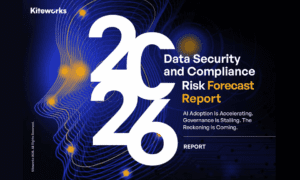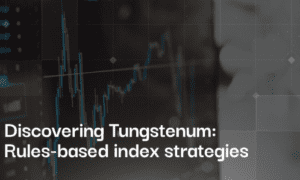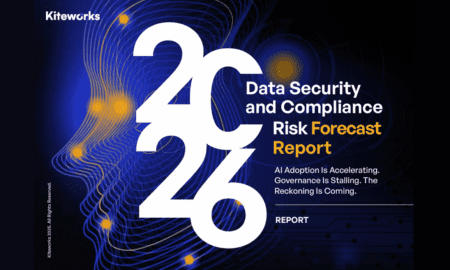In the architecture, engineering, and construction (AEC) industry, digital transformation has revolutionized how projects are conceived, designed, and executed. From Building Information Modeling (BIM) software to cloud-based collaboration tools, technology has become the backbone of modern builds. However, this reliance on digital assets has opened the floodgates to cyber threats, with ransomware emerging as a particularly insidious danger. In 2025, a high-profile attack on a major engineering firm in Europe halted operations for weeks, encrypting valuable blueprints and demanding millions in ransom. Such incidents are no longer rare; they underscore the vulnerability of AEC firms to cybercriminals who exploit interconnected systems and high-stakes data.
For TechBullion’s tech-savvy audience—innovators, executives, and enthusiasts at the intersection of technology and business—these threats highlight an opportunity for strategic defense. Ransomware doesn’t just lock files; it disrupts timelines, inflates costs, and erodes client trust in an industry where precision and reliability are paramount. As AEC projects increasingly integrate Internet of Things (IoT) devices for smart sites and AI for predictive analytics, the attack surface expands. This article delves into the rising ransomware menace in the AEC, explores cutting-edge tech solutions, and emphasizes the importance of localized support, equipping readers with insights to fortify their digital blueprints against evolving threats.
The Rising Ransomware Threat in AEC
The AEC sector’s digital ecosystem is a goldmine for ransomware operators. Unlike traditional industries, AEC relies on vast repositories of intellectual property—detailed CAD drawings, 3D models, and project timelines—that, if compromised, can bring multimillion-dollar ventures to a standstill. According to industry reports, in 2025, ransomware attacks on construction and engineering firms increased by over 70% compared to the previous year, driven by the sector’s rapid adoption of remote work and cloud-based platforms.
Why is AEC particularly susceptible? First, the supply chain complexity: Projects involve numerous subcontractors, each with varying levels of cybersecurity maturity. A single weak link, such as an unsecured vendor portal, can serve as an entry point for malware. Phishing emails disguised as invoice updates or material quotes are common vectors that exploit human error in fast-paced environments. Moreover, on-site IoT devices—like sensors for structural monitoring or drones for surveying—often lack robust security, creating backdoors for attackers.
The financial impact is staggering. Downtime from a ransomware incident can cost AEC firms upwards of $100,000 per hour, factoring in delayed deliveries, legal fees, and reputational damage. In a 2025 case, a U.S. construction company lost access to its BIM files mid-project, resulting in a two-month delay and $5 million in overruns. Regulatory pressures add fuel to the fire; non-compliance with standards like NIST or ISO 27001 can result in hefty fines, especially for firms handling government contracts.
Beyond economics, there’s the human element. Cybercriminals increasingly employ double-extortion tactics, threatening to leak sensitive data—such as proprietary designs or client financials—if ransoms aren’t paid. This not only jeopardizes competitive advantages but also exposes firms to lawsuits over data breaches. As AEC adopts sustainable tech trends, such as green building simulations powered by AI, the integration of additional data points heightens risks. Without proactive measures, the sector risks undoing years of technological progress with a single click.
Cutting-Edge Tech for Ransomware Defense
To combat these threats, AEC firms are turning to innovative technologies that blend cybersecurity with industry-specific tools. At the forefront is AI-driven threat detection, which analyzes network behavior in real-time to identify anomalies before they escalate. Machine learning algorithms can flag unusual file access patterns, such as bulk encryption attempts on blueprint repositories, instantly alerting teams.
Blockchain technology provides an additional layer of defense by creating immutable backups of critical data. In AEC, where version control of designs is crucial, blockchain ensures that even if primary files are compromised, tamper-proof copies can be restored without paying ransoms. Hybrid cloud models further enhance resilience by distributing data across secure, decentralized environments, and firms minimize single points of failure while complying with data sovereignty regulations.
Zero-trust architectures are gaining traction, requiring continuous verification for every user and device accessing project networks. This is particularly vital for AEC’s mobile workforce, where engineers might log in from job sites via tablets or smartphones. Integrating zero-trust with BIM platforms ensures that only authorized personnel can modify models, reducing insider threat risks.
For firms seeking comprehensive protection, specialized Ransomware Defense solutions are essential. These tailored strategies incorporate endpoint protection, automated backups, and incident response plans designed for the AEC workflow. Advanced tools, such as behavioral analytics, can predict attacks by monitoring for precursors, including reconnaissance scans on cloud-stored project files. In 2025, we’re seeing the rise of quantum-resistant encryption, which safeguards against future threats as quantum computing advances.
IoT security innovations, such as edge computing, enable devices to process data locally, thereby limiting exposure. For smart construction sites, this means encrypting sensor data at the source, preventing ransomware from propagating through networks. Combining these with threat intelligence feeds—drawing from global AEC breach data—empowers firms to stay ahead of emerging tactics.
- AI-Powered Monitoring: Continuously scans for ransomware signatures, reducing detection time from hours to minutes.
- Blockchain Backups: Ensures data integrity, allowing quick recovery without negotiation.
- Zero-Trust Integration: Verifies access at every step, ideal for collaborative AEC environments.
These technologies not only defend but also optimize operations, turning cybersecurity into a value driver for tech-forward AEC leaders.
Localized IT Support and Best Practices
While global tech solutions provide a strong foundation, localized expertise is key to implementing effective defenses, especially in dynamic markets like Houston. The city’s AEC sector, driven by energy infrastructure and urban development, faces unique challenges, including hurricane-related disruptions and supply chain dependencies on oil & gas. Here, tailored IT support bridges the gap between generic tools and industry needs.
In hubs like Houston, IT Support for Construction Firms in Houston provides customized cybersecurity frameworks that align with local regulations and project scales. These services include vulnerability assessments for on-site networks, ensuring that mobile command centers remain secure amid Texas’s variable weather. By partnering with regional experts, firms gain access to 24/7 monitoring and rapid response teams familiar with AEC workflows.
Best practices begin with employee training: simulate phishing attacks to build awareness, as human error accounts for approximately 80% of breaches. Implement multi-factor authentication across all tools, from email to BIM software. Regular data backups—both offsite and air-gapped—ensure quick restoration, while network segmentation isolates critical assets, such as design files, from administrative systems.
- Conduct Audits: Quarterly reviews of IT infrastructure to identify weaknesses in subcontractor integrations.
- Adopt Automation: Utilize scripts for patch management, ensuring software remains up-to-date against known vulnerabilities.
- Foster Collaboration: Share threat intelligence with industry peers through local AEC forums in Houston.
Ultimately, localized support enables firms to tailor global technology, transforming potential vulnerabilities into fortified strengths.
Conclusion
As the AEC industry propels into a more digital future, ransomware defense isn’t just about survival—it’s about thriving through innovation. By leveraging AI, blockchain, and zero-trust models, companies can protect their intellectual property while enhancing operational efficiency. In regions like Houston, specialized IT support ensures these strategies are practical and scalable. For TechBullion readers, this convergence of tech and AEC signals exciting opportunities: Invest in robust defenses today to build a resilient tomorrow. Don’t wait for the next breach—fortify your digital foundations now.





























